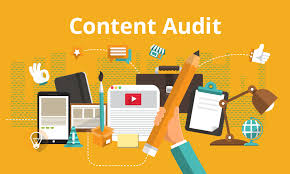Content Marketing vs Ad Driven Business Model & Why It Matters
Do you remember last year when Medium’s CEO Ev Williams described ad-driven media on the  internet as the “broken system” and in an effort to change it, he laid off 50 employees in non-engineering roles and shut down offices in New York and Washington, D.C? Now I don’t know how much Medium has changed since then, but a new wind of change in marketing has already been blowing. The advertising market is shifting away from digital ad marketing to content marketing, and it is crucial to know the difference between the two. This article will explain what key advantages make content marketing different, why it matters, what we might have been doing wrong, and how we can harness its power innovatively in 2018 and beyond.
internet as the “broken system” and in an effort to change it, he laid off 50 employees in non-engineering roles and shut down offices in New York and Washington, D.C? Now I don’t know how much Medium has changed since then, but a new wind of change in marketing has already been blowing. The advertising market is shifting away from digital ad marketing to content marketing, and it is crucial to know the difference between the two. This article will explain what key advantages make content marketing different, why it matters, what we might have been doing wrong, and how we can harness its power innovatively in 2018 and beyond.
What Makes Content Marketing So Impactful?
A few years ago, marketing campaigns were all about banners, pop-ups, footers, headers, and their effectiveness was measured through unengaged clicks, useless impressions, and social media shares where people keep posting links to articles that they actually have never read beyond the headlines. Far worse, many business executives and marketing teams were gauging content performance with a mere focus on the quantity of data. After all, getting caught up in impressive numbers is very laudable. However, marketers eventually have realized, with a laser-focus on the ad-driven business model where the only thing that matters is whether a web page stayed open long enough to make money, the quality of engagement was being ignored. This method of marketing simply couldn’t resonate with today’s savvy viewers. This situation set a great example for why marketers should be continuously exploring new tactics to crack the consumer code in the attention economy. After all, you know how the saying goes “if it worked yesterday, it probably won’t work tomorrow.”
Since that moment of realization, the marketing world has never been the same! Today,  businesses which adopt content marketing over ad-driven marketing programs, don’t focus on the typically ignored banners, annoying popups, and autoplay video ads or salesy news stories geared so obviously on lead generation over providing quality content. Instead, they shifted their focus onto becoming an authority or a thought leader to naturally capture and maximize consumer attention.
businesses which adopt content marketing over ad-driven marketing programs, don’t focus on the typically ignored banners, annoying popups, and autoplay video ads or salesy news stories geared so obviously on lead generation over providing quality content. Instead, they shifted their focus onto becoming an authority or a thought leader to naturally capture and maximize consumer attention.
So the question is: “What makes content marketing different?” I could tell you a whole of a list as an answer but the top three key advantages are being cost-friendly, a long-lasting impact and, the ability to leverage engagement with the target audience in a dialogue format rather than delivering a monologue. That being said, what I am talking about is not just publishing a couple of multimedia content items here, or a few blog posts there. You need to put data-driven marketers behind the wheel to maximize the effectiveness of every single marketing dollar, instead of relying on “gut instincts”. Unfortunately, according to research from Econsultancy, in partnership with Google, across all types of organizations, 75% of marketers agree that a lack of education on data analysis and analytics is the biggest barrier to making more key business decisions based on data insights.
If you have big bucks to disperse, you can always go ahead and advertise your brand during the big events or in a Hollywood movie as there are high chances the brand would get huge exposure in a short span of time. It is hard to say the same for the lifespan of its impact though. You may end up having a successful one-hit commercial that is yet another flash in the pan.
Customer Engagement Varies at Each Step of the Customer Journey
If you don’t have a tremendous ad budget to hire rock stars, or display your ad during the Super Bowl and want to build the engagement with your audience over time, you need to develop an efficient and effective content marketing strategy. While doing so, it is important to incorporate that strategy with your customer journey map. For those who are not familiar with the term of a customer journey map, it is basically one of the best storytelling marketing tools as it tells the story of a customer’s lifecycle by mapping out the stages of the cycle from the first contact to the engagement of a long-term relationship.
Bowl and want to build the engagement with your audience over time, you need to develop an efficient and effective content marketing strategy. While doing so, it is important to incorporate that strategy with your customer journey map. For those who are not familiar with the term of a customer journey map, it is basically one of the best storytelling marketing tools as it tells the story of a customer’s lifecycle by mapping out the stages of the cycle from the first contact to the engagement of a long-term relationship.
The way you engage with your customer varies at each step of a customer’s lifecycle, so rather than rushing the cycle towards a close, it is more productive if you precisely assess which stage your prospect is at and which information should be provided accordingly. To create one, first, you are supposed to figure out what phases your customers are going through, what their goals are on each stage, and what content you could use to help them achieve these goals.
To put this into perspective, let’s say your prospect has just become aware of the fact that there is a problem. In this stage, let’s call it the awareness stage, they are not looking for a solution yet. Creating content for your prospects who are experiencing this stage, just like a chess grandmaster, you need to think ahead of what your customers might be looking for. As they are experiencing and acknowledging the symptoms of a need or an issue, it would definitely be a good time to help them understand and identify their problem/situation. In other words, it is the time for educational content materials to come off the bench. If you wonder what the relevant type of content would be, informative, third party and vendor-neutral content such as eBooks, White Papers, Analyst Reports, Research Reports, Expert Content, Blogs, Case Studies, or a Newsletter could help you educate your prospects and start building a relationship with them. For the content creation process, using some keywords such as issue, problem, improve, optimize, troubleshoot, tips, how, and opportunity may resonate with your target audience at this stage.
Since you get the idea, I won’t go over every stage but keep in mind that using targeted content articles is a more strategic and focused method than taking a “spray and pray” approach. As straight-forward as it sounds, marketers still treat all the audience the same so it's no wonder why 65% of content is unused mostly because the content is not findable or relevant. All the stages, from nurturing your new prospect, converting them into a buyer to cultivating strong customer loyalty with your brand, require different approaches and information.
Have You Been Wasting Your Content Marketing Budget?
Just because content marketing is one of the most cost-effective marketing methods, doesn’t mean it is free. In fact, a study by the research firm SiriusDecisions found that enterprise organizations spend two times more than they think they do on content, and emerging growth organizations spend more than ten times. When you don't know if what you are creating is working, how would you know if it is worthwhile to continue?
Gleanster Research and Kapost surveyed over 3,400 marketers from organizations of various sizes to quantify the performance of their B2B content marketing initiatives. One of the key findings showed that mid-to-large B2B organizations lose an estimated $958 million each year because their content marketing has gone wrong. You might think that insufficiency of budget allocated should be causing this but conversely, 67% of respondents ranked content marketing as a top three priority. Wondering if your organization falls under any of these figures? Let’s take a short and sweet quiz!
If your honest answer is somewhere on the ‘yes’ side of the scale to at least one the following questions, you might be wasting some of your marketing bucks:
-
Are you mostly ignoring historical and/or real-time data, instead, running with your gut  instincts and unrestrained creative urge?
instincts and unrestrained creative urge?
-
Is your organization one of 54% of brands that are making assumptions about what customers want, based on single interactions? No wonder why 96% of 6800 customer respondents believe many brands are providing “bad personalization.”
-
Are you failing at including a clear and direct call-to-action to the conclusion of your persuasive story to stir your audience to act enthusiastically?
-
Does experimenting with various types of articles, channels, or calls-to-action through A/B testing seem time wasting to you? “The true method of knowledge is an experiment.” — William Blake
-
Do you believe you have found the best-fitting path to execute a great content marketing plan and expect that your tactics will work out forever? “What worked yesterday doesn't always work today.” — Elizabeth Gilbert
-
Do you believe the more the merrier when it comes to content creation because your audience eventually gets hooked on one of the too many posts of yours while scrolling endlessly through their social media newsfeeds?
-
Do you think it is too early to adopt new content delivery channels such as conversational, bot-powered services? “Marketers’ best leverage exists when there’s a new audience that’s growing but not a lot of competition trying to reach that audience. When you invest in an emerging technology, you can be in front of a growing audience in a far less competitive landscape.”
How to Maximize the Effectiveness of Every Single Marketing Dollar
Data-driven marketing: To make educated decisions on the state of their audiences’ content consuming behaviors, today, enterprises have no other choice than becoming data-driven and embracing cognitive computing to drive meaningful actionable recommendations from their customer data. With the advent of technology, today’s cognitive platforms’ natural language processing is capable of assigning topics to a pool of 25 million semantic entities, by weight. So why not gain insight at a fraction of the cost and time without the restrictions of traditional methods and taking the guesswork out of business processes?
Target your audience with laser-precision: If you don’t want to throw a bunch of content against a wall and wait to see what sticks, you need to know your audience. Today, marketers are able to collect zillions of bits of data and have the technology to translate them into actionable recommendations. In the era of clutter with non-relevant and out-of-context information, content that is served to a targeted audience stands out, and this is where micro-targeting comes into play.
Keywords are also still powerful as they provide marketers shorter, more precise phrases to work with, more trackable results, and generally higher potential volume. To cut through the noise, niche keywords should be a forethought, not an afterthought when content is curated. Although it requires a little bit of research and a deep understanding of your target audience, once it is documented, it can go a long way and ultimately, contribute to revenue generation.
If you need to target smaller sub-locations as you have a local business, geotargeting may help you draw attention from a specific location. The location-based data basically gives marketers a handle on compiling the consumer behavior with location. Many marketers must have already seen the value of it as the surging interest in location-based marketing spend is expected to continuously grow at an annual compound growth rate of 24.6% from almost $10 billion in 2015 to $29.5 billion in 2020, according to BIA Kelsey.
Don’t be shy to repurpose your content: Rethink, reimagine, repurpose, and reuse whenever it is applicable. Spending some time honing your old content can result in garnering a better traffic than your new content potentially could drive. After all, seizing every opportunity to maximize your business output of your content creation process is critical for efficiency.
To do so, auditing your old content may be a great starting point. Here are some questions that may help you decide what to do with your old content when revisiting those pages:
-
Why did these particular pieces perform better than others?
-
What type of content garnered remarkable attention?
-
Which subjects are your audience most interested in?
-
What’s the behavior flow? Do they drop-off after the landing page or keep interacting with other content?
As 2017 comes to a close and businesses look toward 2018, a content audit is also beneficial to take a hard look at what performed well and what didn’t so you can project the information into the future and get down to planning.
Allocate your resources to favor quality over quantity: This is a very obvious one in theory but you would be surprised by how many businesses are actually failing on this one in the real life as it is easy to get caught up in the trend of continuously posting stuff. You can easily see that tone-deaf social media posts are all over the place! If you wonder what makes your content compelling, look no further than the authenticity it may provide. Therefore, the only thing you should never compromise on is the narrative quality of a story in your content, as captivating storytelling is one of the main reasons for why content marketing has been so impactful.
Cash In On User-Generated Content: 69% of consumers say a source is trustworthy when the expert has used the product or service before, and B2B decision makers put a lot of emphasis on other professional opinions when making decisions. Content created by a brand is still informative, but when it’s written by peers, that content is instantly considered more trustworthy. To find out more about how to make your audience feel inspired and motivated to talk you up on social media, please check out one of my previous articles as I shared some tips and best-practices that may inspire and guide you.
My POV
To circle back to the differences between content marketing and digital ads, here’s how I would encapsulate it:
-
Content marketing owns the medium, the ad-driven business model buys placement in the medium
-
Content marketing is considered as a pull marketing approach to get the customers to come to you, the ad-driven business model promotes products by pushing them onto consumers.
-
Content marketing focuses on cultivating brand loyalty and keeping customers coming back, the ad-driven business model is more concerned with short-term sales.
-
Content marketing is known for being one of the most cost-effective marketing methods, the ad-driven business model, typically, requires lots of advertising dollars to be spent on it.
-
Content marketing focuses on engaging with a customer at each step of the customer cycle, the ad-driven business model focuses more on rushing the cycle towards a close.
-
Content marketing requires some time for the big returns that last long, the ad-driven business model aims at fast returns that come at a cost.

Venus Tamturk
Venus is the Media Reporter for CMS-Connected, with one of her tasks to write thorough articles by creating the most up-to-date and engaging content using B2B digital marketing. She enjoys increasing brand equity and conversion through the strategic use of social media channels and integrated media marketing plans.